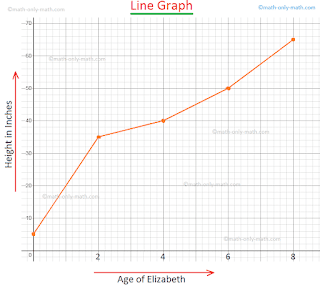A Comprehensive Guide to Mathematical Understanding
Teaching Mathematics: A Comprehensive Approach
In the ever-evolving landscape of mathematics education, integrating diverse and effective teaching methods is essential for fostering understanding and enthusiasm among students. This article explores an interdisciplinary approach that combines three vital components: graphs that represent functions, place value words, and a table of Chi-Square distribution. This amalgamation creates a rich learning experience that not only elucidates core mathematical concepts but also highlights their interconnectedness.
1. Graphs Representing Functions
Graphs that represent function. Understanding functions is fundamental to mathematical literacy, and graphs serve as powerful tools in representing these functions visually.
Introduction to Functions:
Begin by demystifying the concept of functions. Define a function as a relationship between input and output values, emphasizing the dynamic nature of this connection.
Coordinate Plane Exploration:
Introduce the Cartesian coordinate system, providing students with the foundation needed to understand how coordinates relate to points on a graph.
Plotting Points and Shape Analysis:
Engage students in hands-on activities, guiding them through the process of plotting points on a graph. Explore various function types, such as linear and quadratic, and discuss how the shape of a graph reflects the underlying function.
Real-World Applications:
Illustrate the real-world relevance of graphs. Show how economists use graphs to model trends, how physicists represent motion, and how biologists analyze data. Connecting functions to practical scenarios enhances students' appreciation for their applicability.
Interactive Graphing Activities:
Utilize technology, such as graphing calculators or software, to immerse students in interactive graphing activities. This not only reinforces theoretical concepts but also equips them with valuable technological skills.
2. Place Value Words in Mathematics
While graphs enhance visual understanding, the incorporation of place value words provides a linguistic dimension to mathematical comprehension.
Introduction to Place Value:
Establish the significance of place value in understanding numerical structure. Describe place value as the value of a digit based on its position in a number.
Visualizing Numbers with Place Value Words:
Use visual aids like place value blocks to represent numbers tangibly. Encourage students to build and deconstruct numbers, associating each digit with its corresponding place value.
Place Value Words in Action:
Demonstrate how place value words function by breaking down numbers verbally. Engage students in activities that involve articulating the place value words for different digits, fostering a deeper connection between words and numerical representation.
Interactive Learning Games:
Incorporate games that require students to use place value words actively. This interactive approach not only makes learning enjoyable but also reinforces the connection between words and mathematical concepts.
Real-World Applications:
Highlight examples of how place value words are employed in everyday scenarios, reinforcing the practical relevance of this linguistic approach to mathematics. Connect place value to real-world applications, enhancing overall understanding.
3. Table of Chi-Square Distribution
As students delve into statistical analysis, a table of Chi-Square distribution becomes an invaluable resource. Organizing Chi-Square distribution keywords with subheadings creates a structured reference guide.
Chi-Square Distribution Overview:
Define the Chi-Square distribution and elucidate its characteristics. Highlight the distribution's shape and properties, setting the stage for deeper exploration.
Degrees of Freedom:
Explain the concept of degrees of freedom within the context of the Chi-Square distribution. Emphasize how degrees of freedom impact the distribution's shape and interpretation.
Hypothesis Testing with Chi-Square:
Explore the application of Chi-Square distribution in hypothesis testing. Break down the steps involved in hypothesis testing using Chi-Square, providing clarity for students navigating this statistical terrain.
Goodness of Fit Tests:
Delve into the use of Chi-Square distribution in goodness of fit tests. Present practical examples and scenarios where goodness of fit tests prove applicable, grounding theoretical concepts in real-world contexts.
Contingency Tables and Chi-Square:
Demonstrate how Chi-Square tests are applied to analyze relationships in contingency tables. Offer insights into interpreting results and drawing meaningful conclusions from contingency table analyses.
Critical Values and Significance Levels:
Detail the determination of critical values from Chi-Square tables. Discuss the significance levels and their pivotal role in hypothesis testing, elucidating the statistical significance of findings.
Applications in Research:
Present real-world examples showcasing the applications of Chi-Square distribution in research. Emphasize the significance of Chi-Square tests across diverse scientific disciplines, reinforcing its relevance beyond the classroom.
By seamlessly integrating graphs that represent functions, place value words, and a table of Chi-Square distribution, educators can cultivate a holistic learning experience. This approach not only equips students with a diverse set of mathematical skills but also underscores the interconnectedness of mathematical concepts across various domains.



Comments
Post a Comment